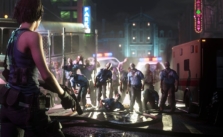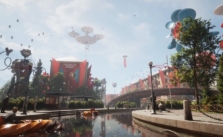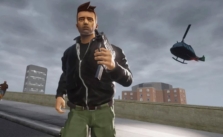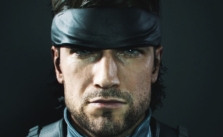Ocarina of Time – Link’s Emotional Transformation & The Cruel Passage of Time

As Link bravely plucks the Master Sword from the Temple of Time pedestal, seven years instantly pass. Having aged considerably, the once peaceful land of Hyrule now teeters on the brink of collapse. Within this future timeline, Link faces the bleak reality of a world plunged into dystopian darkness and drained of life by an omnipotently destructive curse.
In its deadly wake, ominous swirls now circle over Death Mountain, and a parasitic amoeba threatens to contaminate Hyrule’s essential water supply – fatally trapping the Zoran race under a thick slab of ice. Worse still, sinister entities, known as Sister Poes, haunt the hallways of the Forest Temple, summoning to life violent vegetation and upsetting the natural order. At the same time, an ancient fire-breathing dragon is resurrected from the murky depths of Death Mountain.
Ganondorf, King of the Gerudo Thieves, lies at the rotten heart of this dreaded curse. Who, driven solely by an insatiable desire to attain immortality and unlimited power in uniting all three Triforce pieces, has cast a despicably dark shadow over Hyrule. As fate preemptively foretells, a young Kokiri kid, known as The Hero of Time, would one day awaken to an unfulfilled destiny. Yet, unbeknownst to Link, Hyrule would soon be brought to its knees – crippled and corrupted by a calamitous curse caused on behalf of Ganondorf’s vile rampage of terror.
And so, Link’s physical and emotional transformation plays an essential part in Ocarina of Time. As we’ll soon discover, it’s a distinctly relatable journey we all must enjoy and endure.
Transformation of Link and the Wider World | From Beautiful to Bleak
For most of us, the transition to adulthood involves significant change. Yet, early on, throughout those awe-inspiring youthful years, the world around us exhibits endless wonder, from the innately beautiful to the bizarrely abstract. Somewhat isolated from loss, we innocently investigate life’s fascinating curiosities, cocooned in a bubble of blissful ignorance. Not entirely unburdened by trauma or tragedy, but free from adulthood’s painful, emotional complexities. Link, in this respect, is no different to you or me.

In Ocarina of Time, during Link’s juvenile quest to claim all three spiritual stones, our would-be hero experiences a lively technicolor world populated by effervescent, larger-than-life characters. While young, Hyrule symbolizes a magical place, where playful innocence and childhood wonder remain front and center.
A prime example would be Hyrule’s bustling marketplace, which idyllically paints the picture of a vibrant town brimming with eternal life, whose joyful occupants flood the streets in cheerful song and whose children play happily in harmony. However, after traveling through time seven years into the future, the world Link once fondly inhabited now looks vastly unrecognizable. Nowhere more so than Hyrule’s marketplace.
Once the life and soul of Hyrule, the town center is now reduced to ruin and robbed of vitality. Worse still, amidst the rubble exist sinister, skinless entities, known as Redeads, who somberly patrol the once-prosperous streets – a far cry from the wholesome scenes of seven years prior. Eerily, it’s almost as if Ganondorf sucked the very soul from Hyrule.
When playing OOT the first time over, this scene shook me to the core more than any other moment and still does today. In my mind, it poignantly encapsulates the constant, often cruel passage of time while illustrating just how precious a commodity it can be.
Loss, Tragedy, Sacrifice & The Innocence of Youth
Grown-up, Link faces many perilous trials and tribulations. Not least, via the treacherous temples safeguarding each of the six medallions. But with every medal earned, Link is forced to suffer substantial personal sacrifice and relinquish something dear to his heart. For instance, Link loses a close childhood friend in Sariah upon finishing the Forest Temple. Shortly after, when acquiring the Fire medallion, Link waves an emotional farewell to family member Darunia, having previously become a sworn member of the Goron brotherhood.

Later, when defeating the Water Temple, Link’s lifelong companion and possible love interest, Princess Ruto, suddenly departs from his world. And so, it would seem somewhat tragically; our hero loses something special with each step closer to Ganondorf. Worse still, robbed of his childhood years, one by one, those closest to Link are painfully removed from the equation until only Ganondorf and Princess Zelda remain.

In summary, then, what’s the overarching moral of the story? Personally, Ocarina of Time tells a touching tale about the nature of existence. But, in many ways, it warns us of time’s transitory, semi-permanent flow and the importance of living each day to the full. Only through Link’s struggle, his battle against time, having witnessed immeasurable heartache and hardship, are we reminded that time, in its strictest sense, is something to be valued, treasured, and always respected.
Oddly, the nature of time is our one true enemy, and yet, in contrast, it allows us to experience the world, forge friendships and build unbreakable bonds. In essence, life is precious, so make every moment count.
This has been a love letter to Ocarina of Time. Thank you for making a masterpiece, Nintendo. I will never forget you…
-

Robbie is a lifelong gaming enthusiast who grew up in the glorious era of Goldeneye split-screen multiplayer. Although he's excited for Ragnarok, Robbie is often found delving back into his retro roots; entirely convinced Metal Gear Solid 1 and Ocarina of Time are masterpieces of equal merit.
View all posts




